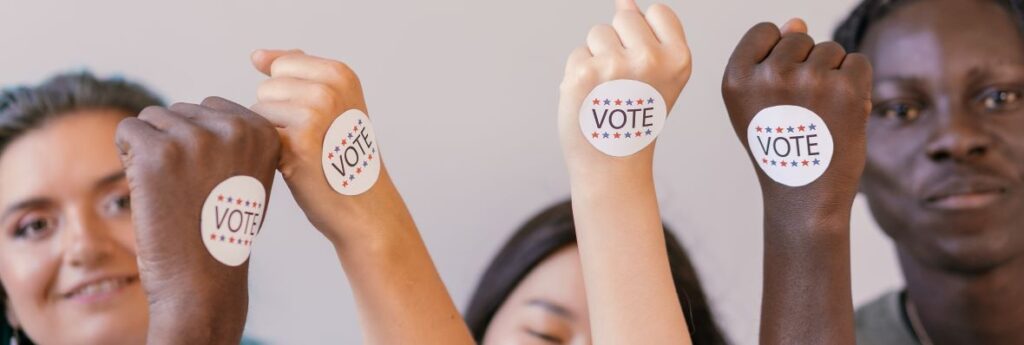The Tourism Industry Association of Canada says Canadian travel businesses can recover from the pandemic, but only if they have a committed federal partner that will help “build a bridge,” in collaboration with tourism industry leaders, to support them well into 2022.
Moreover, the association is urging those who work in the Canadian travel and tourism sector to not only vote, but to engage and lobby their own local candidates. “We are a pivotal moment to ensure that all candidates know that we need continued support in order to survive,” says TIAC president and CEO Beth Potter.
Canada’s hardest hit industries are at “critical risk” without continued federal support, Potter adds, with tourism businesses facing devastating revenue losses due to COVID.
TIAC, which is the national body for the travel and tourism industry, notes that two summer seasons have been lost to the pandemic, thereby draining financial reserves and creating massive debt for businesses. Moreover, the industry is now having difficulty attracting enough employees as it strives to relaunch.
As such, TIAC says sector-specific support is needed from Canada’s new government after the federal election on Sept. 20 and is urging all parties to support a qualified and limited financial support program through May 2022 to the hardest hit businesses. Specifically:
• Survival support for the hardest hit tourism, hotel and event businesses of any size that have experienced a 40% loss in revenue in any 12-month period after March 31, 2020
• Government support would cover negative cash flow from normal financial operations (i.e., excluding capital expenditures and non-cash items such as depreciation or accruals). Support not to exceed 75% of normal cash expenditures
• Program to run from Sept. 1 to May 31, 2022, with cash flow calculated on a cumulative basis inclusive of CEWS and CERS.
In consultation with the tourism industry, TIAC is also calling for Canada’s elected government to commit to:
• Conduct a comprehensive review of all current Immigration, Refugees and Citizenship Canada (IRCC) programs to identify opportunities and align policies that will work for tourism, and to create a dedicated immigration pathway for the sector.
• Launch a campaign to promote employment opportunities in the sector and to address reputational damage or growing negative sentiments of the industry.
• Invest in a comprehensive Indigenous tourism workforce strategy to increase the number of Indigenous workers in the sector and boost the skills and cultural knowledge to help Indigenous tourism businesses thrive while firmly establishing Canada as a premiere destination for authentic Indigenous tourism experiences.
TIAC says that even with extensive vaccinations and the gradual lifting of restrictions, a bleak fall and winter is “certain” for Canadian tourism businesses. “There will be no conventions, limited business and government travel, and the wind-down of support programs (CEWS & CERS) could not come at a worse time,” says Potter, adding, “programs like this have been lifelines for the industry.”
In a recent industry-wide survey of tourism businesses in every province and territory, TIAC found that:
• One-third of respondents expect up to or over a 50% decline in revenue in 2021 compared to 2020
• One-third of respondents lost between 75% and 100% of revenue compared to the same time in 2019.
• 64% of respondents indicated low cash flow as a challenge facing their business, with a majority citing financial shortfall and burden as the biggest risk currently impacting them.
• Over 40% of respondents had to lay off over half of their staff due to COVID-19.
• Almost 55% of respondents noted either loss of revenue or labour shortages as the biggest threat to their businesses.
• Almost half of respondents have taken on over $50,000 in debt to keep their business afloat.
• Almost 40% of respondents say they would have to shut down their businesses today if they no longer received support from government programs.
• The majority of respondents predict it will take between 1 to 3 years for sufficient tourism demand to return to the pre-pandemic level of profitability.
• 65% of respondents accessed the Canada Emergency Wage Subsidy (CEWS), and 35% accessed the Canada Emergency Rent Subsidy (CERS).
TIAC adds that COVID-19 has caused significant disruption to the tourism labour market, much greater than the economy overall – disproportionately impacting youth and minority populations. It reports that the industry sector employs over 500,000 fewer Canadians than it did this time last year.
Prior to COVID-19, tourism was one of the fastest-growing industries in the world. As Canada’s fifth-largest sector, tourism was responsible for $105 billion in GDP, sustained more than 1.8 million jobs, and was made up of 225,000 small- and medium-sized businesses across Canada.
But when the pandemic struck, the tourism industry was the first hit, hardest hit, and will be the last to recover, says TIAC and the impact on the tourism economy has been greater than SARS, the 2008 economic crisis and 9/11 combined.
For more on TIAC’s recommendations for the elected party on how best to support Canada’s tourism industry, visit HERE.

